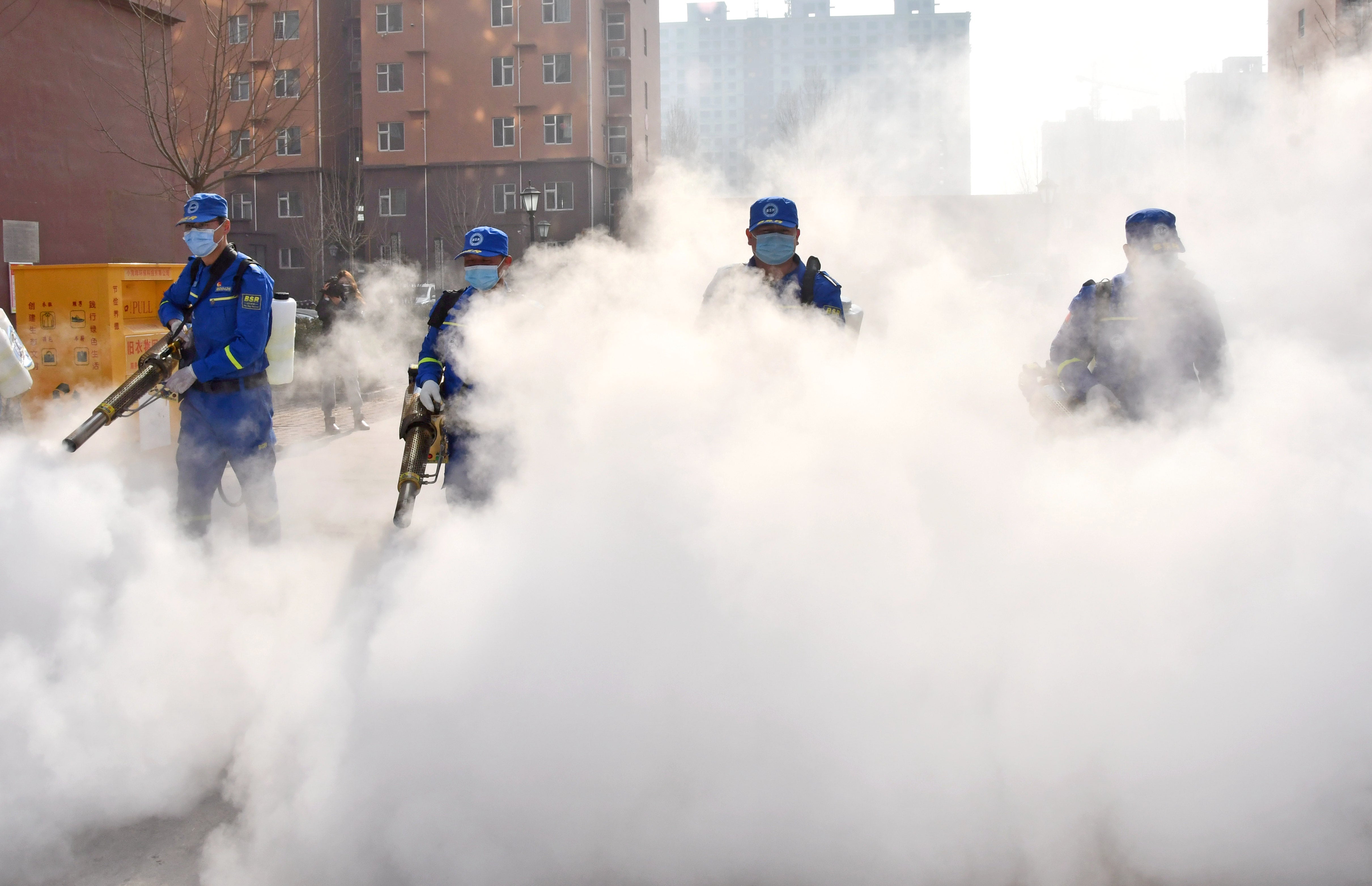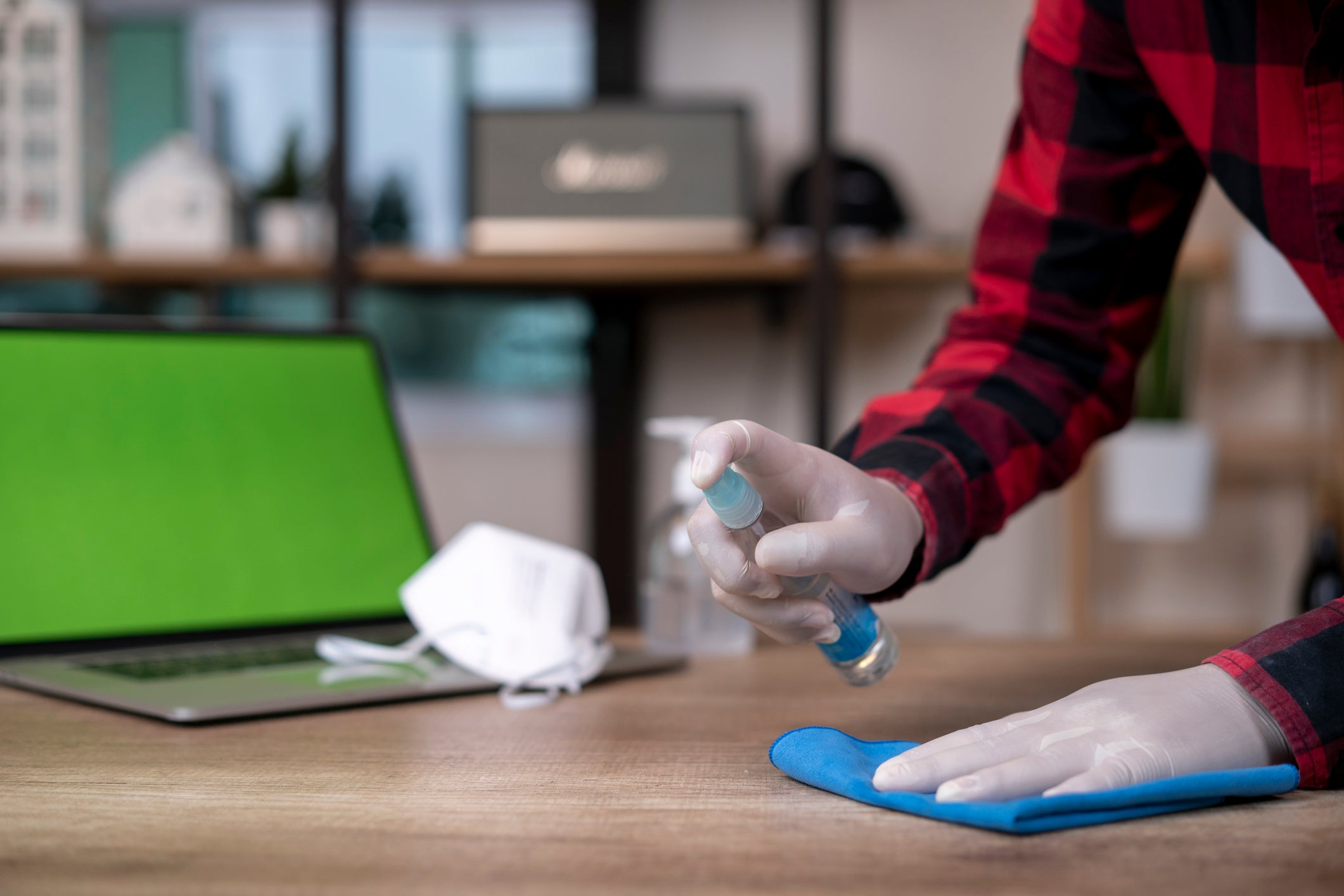
By Might, the WHO and health agencies around the globe were recommending that individuals in regular community settings– houses, buses, churches, schools and shops– need to clean and sanitize surface areas, particularly those that are frequently touched. Disinfectant factories worked around the clock to keep up with heavy need.
However Goldman, a microbiologist at Rutgers New Jersey Medical School in Newark, chose to take a more detailed look at the proof around fomites. He composed a pointed commentary for The Lancet Contagious Illness in July, arguing that surface areas provided relatively little risk of transferring the infection.
Many others reached comparable conclusions. In reality, the United States Centers for Illness Control and Avoidance (CDC) clarified its assistance about surface transmission in May, specifying that this route is “not believed to be the primary way the virus spreads”. It now mentions that transmission through surfaces is “not thought to be a typical manner in which COVID-19 spreads”.
As proof has collected over the course of the pandemic, clinical understanding about the infection has altered. Studies and investigations of outbreaks all point to most of transmissions taking place as an outcome of infected individuals spewing out big droplets and small particles called aerosols when they cough, talk or breathe. These can be directly breathed in by people close by. Surface area transmission, although possible, is not believed to be a considerable threat.
But it’s much easier to tidy surfaces than improve ventilation– especially in the winter– and consumers have actually come to expect disinfection procedures. That suggests that governments, companies and people continue to invest vast amounts of time and cash in deep-cleaning efforts. By the end of 2020, international sales of surface area disinfectant totalled US$ 4.5 billion, a jump of more than 30%over the previous year. The New York Metropolitan Transit Authority (MTA), which supervises subways and buses and lost billions of dollars in passenger revenue in 2020, spent $484 million last year in its reaction to COVID-19, including enhanced cleaning and sanitization, according to a representative.
Part of the problem is that professionals can’t eliminate the possibility of fomite transmission, and the assistance from many health agencies about how to handle surface areas has been uncertain as the science has actually changed. In November, Chinese authorities introduced standards needing disinfection of imported frozen-food packages. And the CDC directs people to a thorough list of agents that eliminate SARS-C0V-2 and states: “Frequent disinfection of surfaces and things touched by several people is very important.”
Experts say that it makes sense to suggest hand cleaning, but some researchers are pushing back versus the focus on surfaces. Excessive attention on making surface areas pristine takes up minimal time and resources that would be much better spent on ventilation or the decontamination of the air that people breathe, she states.
Virus RNA can deceive
The concentrate on fomites– instead of aerosols– emerged at the very beginning of the coronavirus break out because of what individuals knew about other transmittable diseases. In health centers, pathogens such as methicillin-resistant Staphylococcus aureus, respiratory syncytial virus and norovirus can hold on to bed rails or hitch a trip from someone to the next on a physician’s stethoscope. So as soon as individuals started falling ill from the coronavirus, researchers started swabbing healthcare facility spaces and quarantine centers for locations the infection could be lurking. And it seemed to be all over.
In medical centers, individual items such as checking out glasses and water bottles tested favorable for traces of viral RNA– the main manner in which scientists determine viral contamination. Too, did bed rails and air vents. In quarantined families, wash basins and showers harboured the RNA, and in dining establishments, wooden chopsticks were found to be infected. And early studies suggested that contamination might linger for weeks. Seventeen days after the Diamond Princess cruise liner was abandoned, researchers found viral RNA on surfaces in cabins of the 712 travelers and crew members who tested favorable for COVID-19
However contamination with viral RNA is not necessarily trigger for alarm, states Goldman.
To attend to that part of the equation, researchers began evaluating whether coronavirus samples left for days on numerous surfaces might infect lab-grown cells. One research study in April found that the infection remained contagious on tough surface areas such as plastic and stainless-steel for 6 days; on bank notes, it lasted for 3 days; and on surgical masks, a minimum of 7 days. A later study revealed that practical virus existed on skin for up to 4 days, but on clothes it endured for less than 8 hours. And others discovered contagious virus on library books bound in natural and artificial leather after 8 days.

Unrealistic conditions
Although these types of experiment demonstrate that the coronavirus can make it through on surfaces, this doesn’t imply that individuals are capturing it from surface areas such as doorknobs.
Just a handful of research studies have actually looked for practical infection outside the lab.
Undoubtedly, scientists have actually struggled to isolate practical virus from any environmental samples, not just fomites. In the only research study that has actually prospered, researchers grew infection particles from medical facility air samples gathered at least 2 metres from an individual with COVID-19
However, researchers warn versus drawing absolute conclusions. “Just because viability can’t be shown, it doesn’t imply that there wasn’t infectious infection there eventually,” states epidemiologist Ben Cowling at the University of Hong Kong.
Human direct exposure research studies of other pathogens supply additional hints about fomite transmission of respiratory viruses. In 1987, researchers at the University of Wisconsin– Madison put healthy volunteers in a space to play cards with individuals infected with a common-cold rhinovirus. When the healthy volunteers had their arms limited to stop them touching their faces and prevent them transferring the infection from infected surface areas, half ended up being contaminated. A comparable number of volunteers who were unrestrained likewise became contaminated. In a separate experiment, cards and poker chips that had actually been handled and coughed on by ill volunteers were required to a different room, where healthy volunteers were instructed to play poker while rubbing their eyes and noses. The only possible mode of transmission was through the contaminated cards and chips; none ended up being contaminated. The mix of experiments offered strong proof that rhinoviruses spread out through the air. However such studies are considered dishonest for SARS-CoV-2, because it can kill.
Although it’s probably rare, states Cowling, transmission through surface areas can’t be eliminated. “It simply does not seem to happen that much, as far as we can inform.”
Quotes of transmission based upon levels of viral RNA persisting in the environment seem to bear this out. From April to June, ecological engineer Amy Pickering then at Tufts University in Medford, Massachusetts, and her coworkers took weekly swabs of indoor and outdoor surfaces around a town in Massachusetts. On the basis of the levels of RNA contamination and how often individuals touched surface areas such as doorknobs and buttons at pedestrian crossings, the group approximated that the risk of infection from touching a contaminated surface area is less than 5 in 10,000– lower than quotes for SARS-CoV-2 infection through aerosols, and lower than surface-transmission risk for influenza or norovirus.
” Fomite transmission is possible, however it simply appears to be rare,” says Pickering, who is now at the University of California, Berkeley. “A great deal of things need to form for that transmission to take place.”
That may explain why a global comparison of government interventions to manage the pandemic in its early months discovered that cleansing and disinfection of shared surface areas ranked among the least efficient at decreasing transmission. Social distancing and travel constraints, consisting of lockdowns, worked the very best.
Untidy information
That leaves researchers arranging through messy epidemiological data about how the virus spreads. Hundreds of research studies of COVID-19 transmission have actually been released because the pandemic started, yet there is thought to be only one that reports transmission through a contaminated surface, by what it termed the snot– oral route.
In one other case, 8 individuals in China are thought to have been infected after actioning in sewage including the infection on the street and then strolling the contamination into their homes.
Regardless of the rarity of published examples of fomite transmission, Chinese authorities require that imported frozen food be disinfected. The modification in standards followed a report, which has actually not been launched in detail, that an employee at a frozen-food organization in the northern port city of Tianjin became infected after handling contaminated product packaging of frozen pork imported from Germany. But the WHO and other specialists have actually challenged claims that individuals can be contaminated through the food chain in this manner.
Cowling says that more in-depth investigations are needed, thoroughly tracking who infects whom, and what surface areas and spaces they shared around the time of infection. “What we actually, actually value is epidemiological examinations of transmission patterns, whether it remains in homes or work environments or elsewhere,” he states. “I don’t believe we have actually been doing enough of that.”
The greatest danger
Equipped with a year’s worth of data about coronavirus cases, scientists state one reality is clear. “You have to make up some actually complicated scenarios in order to explain superspreading events with infected surface areas,” she states.
Hand cleaning is crucial, says Marr, since surface area transmission can’t be ruled out. But it’s more vital to improve ventilation systems or to set up air cleansers than to sanitize surfaces, she states. “If we have actually currently taken notice of the air and we have some extra time and resources, then yes, cleaning down those high-touch surfaces could be useful,” she states.
Households can also alleviate up, states Pickering. Quarantining groceries or sanitizing every surface is going too far. “That’s a lot of work and it likewise is probably not minimizing your direct exposure that much,” she says. Rather, reasonable hand health, as well as wearing a mask and social distancing to minimize exposure from close contacts is a much better place to focus efforts.
The WHO updated its assistance on 20 October, stating that the infection can spread out “after infected people sneeze, cough on, or touch surfaces, or objects, such as tables, doorknobs and handrails”.
The CDC did not respond to Nature‘s inquiries about disparities in its statements about the risks posed by fomites.
The problem facing health authorities, says Marr, is that definitively dismissing surface transmission is hard. Authorities can be unwilling to tell individuals not to be cautious. “You never wish to say, ‘Oh, don’t do that,’ because it can happen. And you know, we should follow the preventive concept,” she states.
In spite of the evolving evidence, the general public may have grown to expect additional levels of sanitization after the early months of the pandemic. When the New york city MTA surveyed passengers in late September and early October, three-quarters stated that cleansing and sanitizing made them feel safe when using transport.
Goldman continues to wear a fabric mask when he leaves home, however when it concerns the possibility of capturing the coronavirus from a polluted surface area, he does not take any special safety measures. “Among the ways we protect ourselves is by washing our hands,” he says, “and that uses pandemic or no pandemic.”
This article is reproduced with permission and was first released on January 29 2021.
No comments:
Post a Comment